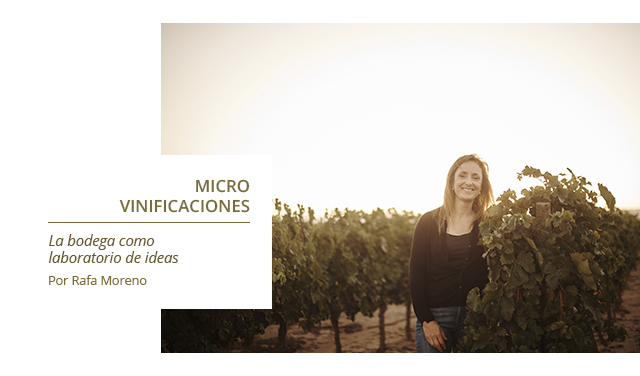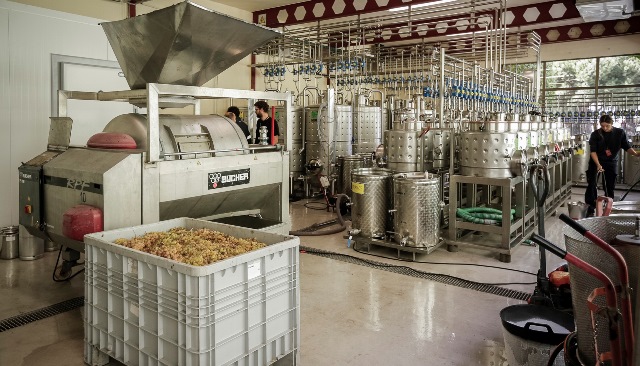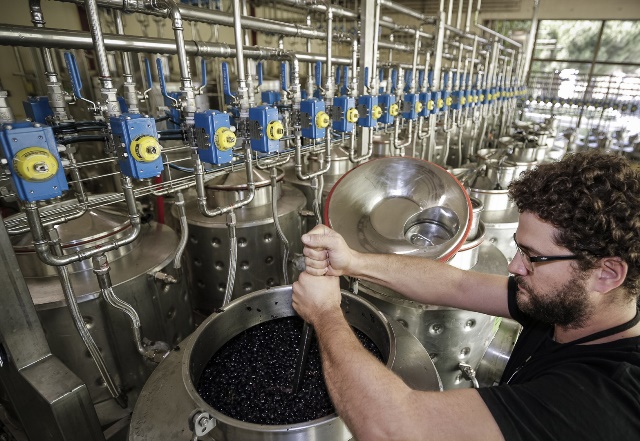Microvinification

We sit down for a chat with Mireia Torres, oenologist, manager of Jean Leon and responsible for the family's DOC Priorat wines. She explains the what and why of the microvinification that Torres is doing at a new facility specifically created for this purpose.
The result is simply fascinating.
At this new winery, a team of three to seven professionals—[depending on the season]—are uniting all of the research projects Bodegas Torres has been working on for the past two decades.
The main lines of research currently focus onreviving ancestral varieties, adapting the vineyard to climate change, isolating and identifying indigenous yeasts, and improving methods of analysis and the process of stabilizing and preserving wine.
But let's take it one step at a time.Conceptually speaking, what are microvinification wines and what is their purpose? Mireia Torres explains it very clearly:Microvinification is winemaking on a very small scale. This becomes necessary when working on experiments, which have to be repeated several times under controlled conditions. It is also very useful when making batches from very small amounts of grapes, which is often the case with certain ancestral varieties.

How did this project come about?At Miguel Torres, we have produced microvinification wines since the 1980s. However, the number has steadily increased over the years, because we have been working on so many RDI projects. At this time, we are producing approximately 250 microvinification batches per harvest. Keep in mind that the smaller the vinification volume, the easier it is for the sample to oxidize and the experiment to fail. Thanks to the new facility, we can work under ideal conditions.
What are we looking for?We're currently working on different kinds of experiments. The goal behind some of the experimental batches is to see the outcome of tests carried out in the vineyard or with ancestral varieties better adapted to climate change. Other batches study indigenous yeasts, which have been isolated in our vineyards and selected because they give the wine a particular character in addition to fermenting it correctly.
Ancestral varieties. Can you tell us more about them?My father began the project of reviving varieties in the 1980s. Over the years, we have improved certain techniques, such as eliminating viruses in the process of in vitro reproduction (in collaboration with INRA in France). We have also added new varieties to the collection. We currently have over 48 known Catalan varieties and 40 unknown Catalan varieties (proven by DNA analysis using micro-satellites). Of the latter, 10 varieties are in the process of being certified due to their enological potential.
We could call the winery an idea lab of sorts...Exactly. Our goal and our reality is that every single collaborator is an idea lab, regardless of the department where he or she works. We want to really push innovation and foster this new kind of company culture.
If I'm not mistaken, we might be seeing some special editions in the future. Can you tell us anything?Well... Not really! I'll be told off if I do! [She laughs]. What I can tell you is that we're seeing excellent results with some of the revived ancestral Catalan varieties and that we'll be making more wines with them in the future.

Amid all the technical jargon, it is fascinating to discover an effort that I, as a romantic, find idealistic to say the least. And that's very cool. Here innovation meets the past. Old vines, new wines...
In light of all this, we're eagerly awaiting the results—are we not, my dear wine lovers?
Rafa Moreno
